A concerted operation involving 3 PARA, 45 Commando and Federal troops to capture the Dhanaba Basin, a Radfan tribal stronghold, began at the end of April 1964. 3 PARA lost two killed and several wounded clearing the fort and village buildings at El Naquil in concert with 45 Commando.
Radfan was a mountainous region 50 miles north of Aden, but within the Federation of South Arabia, a British Protectorate. It was known for constant internecine warfare between the local tribes and had a fearsome reputation; British soldiers themselves were stationed in Aden but deployed out to the Radfan hills on rotation. The heat in the helicopters could reach 52 degrees centigrade and made the rocks of the mountains hot to the touch. 3 PARA was forced to issue salt tablets because the men were losing so much sweat.
In 1963, the Quteibi tribe, known to the British press as the 'Red Wolves', began intercepting caravans and setting mines in order to extort money from people using the Dhala road, a major trade route which crossed through Radfan. They enjoyed tangible support from Egypt and Yemen, as well as tacit encouragement from the Russians. Eventually the British government decided that the lawlessness they were causing had to be suppressed. Part of their goal was to destroy the grain stores of the rebels and deny them access to fertile ground so that they would not recover the ability to terrorise travellers.
B Company 3 PARA, 45 Commando Royal Marines, No. 3 Troop of A Squadron 22nd SAS regiment and local forces of the FRA were assembled together to form the 'Radforce'. Things did not get off to a good start when leading officers of the Radforce ran over a landmine whilst on a reconnaissance mission. This killed two Majors (Linfoot and Monk) and severely wounded a Lieutenant Colonel. The Commander of Radforce, Brigadier Hargroves, only survived by virtue of being in the rear landrover.
Radforce's first objective was to seize two areas of high ground overlooking the Wadi Taym, a dried up ravine which was also a Quteibi stronghold. But their misfortune continued when their advance SAS Patrol came under heavy fire and had to retreat, with their Captain, Robin Christopher Edwards, having been killed. Trooper Warburton meanwhile was killed by a round which passed through the back of Trooper Paddy Baker's knee. Reportedly a Sergeant Lingham tried to rescue Captain Edwards, who insisted "get out of it and leave me alone" (quote via Jonathan Walker's Aden Insurgency, p.102). The bodies of Warburton and Edwards were then disgracefully beheaded by the rebels to send a message. They were later buried with full military honours in Aden, with Major General John Cubbon in attendance. Cubbon had been blamed by the shadow Defence Secretary, Denis Healey, for publicising the circumstances of their deaths. Healey was forced to apologise after it emerged that the report on Warburton and Edwards was already public knowledge.
3 PARA's parachute drop was therefore cancelled until further notice. On May 4, B Company set out on another approach to the Wadi Taym in concert with 45 Commando.
Major Peter Walter, commander of B Coy, was part of a platoon at the rear of the group and grew increasingly bothered with the onerous climb up the cliffs. Whilst the commandos scaled upwards with ropes, he took his men around and clambered up a slope:
"We set off and marched all day and all night. There were a number of hiccups in the approach march. We'd been put at the back of the Marine Commando's column and were very late moving off. There seemed to be incessant hold-ups, and I was beginning to lose my patience. There was another hold-up and I got the word back that the commandos were climbing the cliffs with ropes. We simply moved up to a flank, climbed up alongside and past the marines".
His subsequent leadership earned him his second Military Cross:
"Approaching the foot of the feature [Cap Badge] the company encountered and were engaged by a group of at least sixty dissidents in strong positions -including fortified houses. Under Major Walter's leadership the company immediately attacked and defeated the dissidents, driving them out of their positions, killing at least twelve and wounding more. Major Walter personally took part in an assault on the main fortified house. Though the enemy had been defeated some of them got into sniping positions in the hills above, inflicting casualties on the company. Major Walter quickly reorganised the company in the nearby village and fortified houses and engaged and silenced the snipers".
The leading platoon, meanwhile, was led by Lieutenant Tom Walker and began marching towards El Naqil village and 'Cap Badge', a hill which was also one their goals. As the day began on May 5, 3 PARA found itself exposed in front of El Naqil village, ready for a battle. They secured a fort nearby and very promptly captured El Naqil, shortly thereafter known as 'Pegasus village'. Unfortunately Sergeant Peter Baxter and two other men were shot when they were pinned down by sniper fire before the complete capture of the village. The Battalions second in command, Captain Edward B Jewkes, ran out from safety and dragged the severely wounded Baxter and the injured into cover with some help. His act of heroism cost him his life when he was fatally shot by a sniper; he was posthumously awarded a mention in despatches. He had probably helped save Baxter's life, who had been shot in the chest and shoulder and was later described in a telegram as "very seriously ill in the Royal Air Force Hospital Steamer Point Aden". With Jewkes dead, his Platoon was left without an OC and three injured. What followed was the finest hour of Acting Lance Corporal James Edward Bruton and the dependable Private Malcolm William Smith:
"At first light on 5th May 1964, they encountered and attacked a large group of dissidents in the Wadi Taim. Throughout the daylong action Lance Corporal Bruton displayed courage and leadership of a very high order. In the early stages during a platoon attack Lance Corporal Bruton saw a number of enemy escaping to a flank. He immediately led a successful section attack in which he personally accounted for at least one of the enemy killed. Later in the day, when his Platoon Commander was killed, Lance Corporal Bruton assumed command of a small party of three wounded and one other. He shouted across to Company Headquarters giving the situation and approximate position of the enemy snipers. He ensured that the wounded were in the best cover available and helped by Private Smith gave first aid to the three wounded. As the sun grew hotter Lance Corporal Bruton having correctly appreciated that unless the wounded were moved into shade and given further treatment two of them at least would not survive the day, decided that together with Private M. W. Smith he would get them back into the Fort occupied by Company Headquarters. Having witnessed the accuracy of and the damage inflicted by the snipers Lance Corporal Bruton was fully aware of the dangers of his self imposed mission. His plan which was for himself and Smith to carry one of the wounded each, at the same time helping along the third who was still capable of walking. In one determined dash Lance Corporal Bruton and Private Smith, each carrying a heavy man and helping the third, covered the distance to the Fort under fire from enemy snipers. It was undoubtedly Bruton's calculated courage, unselfishness and disregard for his own safety which saved the lives of at least two of the wounded".
Bruton was awarded the Military Medal and Smith received a Mention in Despatches for this action.
With El Naqil captured, and snipers firing from above having already claimed one life, a resupply was ordered which Major Walter did not want. He recalls: "they insisted on this drop which went wide, way out in the desert, we had to recover it and we lost a man killed doing that. I was extremely annoyed". This man was Private Michael Davis, aged 21, who was shot out in the open by a sniper. However, by 0400 the Commandos had taken the other day's objectives. Despite the two tragedies, the Operation had been a complete success.
B Company 3 PARA was withdrawn to Bahrain on 11 May and rested, while the rest of 3 PARA except D Company moved to Aden. Their next objective was to be the Bakri Ridge overlooking the Wadi Dhubsan, a heavily defended stronghold of the remaining dissident tribesmen.
The Bakri Ridge, rising 5,000 feet and dominating the Wadi Dhubsan, was regarded as impregnable by the tribesmen and housed their leadership. 3 PARA would first have to scale the cliffs and then descend into the Wadi. Major Tony Ward-Booth led C Company 3 PARA towards it beginning on May 18. On May 19, the anti-tank platoon commanded by CSM 'Nobby' Arnold cleared the Al Dahira Ridge of 12 dissidents, taking 3 prisoner from the village of Ar Zuqm. One of the prisoners attempted to escape, being shot and dying despite immediate attention from the Regimental Medical Officer. On May 20, they captured a crest which was quickly dubbed 'Arnold's Spur' after CSM Arnold. During this whole advance, stores were being discovered in the fissures of cliff faces. These included SMLEs as well as Lebel Model 1886 rifles, a WW1 rifle which was the first gun to use smokeless powder.
On May 23, they reached the village of Quedeshi, which was held by about fifty dissidents who were finally forced to retreat after relentless air and artillery support destroyed their positions and killed around 30 men. 3 PARA had scaled the heights carrying 90lb loads, traversing 11 miles in two night marches and occupying the ridge by dawn on May 24 after a number of skirmishes. By this time, as many as 1,000 refugees from the Radfan region, mainly women and children from the Ibdilli and Hujaili tribes, had fled. The Ibdilli tribe was also seeking peace through its chief Sheikh Mahmud bin Umar Saif. These refugees were welcomed with food and medical supplies in the Lower Yafai Sultanate by order of the C in C Middle East Command Charles Harington.
A precipitous descent from the ridge to the Wadi Dhubsan floor, requiring a 30-foot abseil descent at one point, totally bypassed surprised dissident strong-points. 'X' Company of 45 Commando led the advance into the Wadi on May 26. Their 2nd in command, Captain Brind, courageously left cover to set up bright marker panels for the RAF Hunter aircraft, and was shot in the thigh and stomach. He was killed whilst being dragged to safety. Meanwhile, the Scout Helicopter of CO Lt Col Farrar Hockley passed overhead on a forward reconnaissance. A fierce firefight ensued, during which the helicopter was hit and forced to land. Hockley's memories follow:
"We were flying along, below the tops of the hills, running along the wadi, when I noticed a lot of tribesmen on the valley side firing at us. A bullet hit the feed line and fuel began to flood down over the visor of the chopper. Ian McLeod was also shot through the wrist. I asked the pilot, Major Jake Jackson, if he had control. He said that he had, so I told him to turn around and go straight back [...] Jake put the chopper down and at last light the AAC brought up a REME corporal and another fitter who worked through the night to repair the damage".
Strafing support from RAF Hunter fighter-jets and concerted battalion fire broke rebel resistance and they withdrew, leaving six dead and weapons behind. The Scout was repaired overnight by the two REME NCOs from 653 Squadron, AAC and was started up successfully by Major Jake Jackson, to loud cheers. This episode was later mentioned in the citation of Farrar-Hockley's second DSO:
"During the Radfan operations Lieutenant-Colonel Farrar-Hockley's battalion was called upon to perform an extremely difficult ten-mile advance into mountainous enemy territory, and then to attack and occupy an enemy base. This base was highly inaccessible and strongly defended [...] During the battle which developed in the enemy base, the helicopter in which Lieutenant-Colonel Earrar-Hockley was making a reconnaissance was brought down beyond our lines by enemy fire. Having with some difficulty rejoined his battalion, which by that time was pinned down, and although still under fire himself, he launched a well executed attack which finally drove the enemy from their position."
Lieutenant Ian McLeod also earned a Military Cross during the same incident for his stoicism:
"On 26th May, he was one of a party shot down in a Scout helicopter being wounded painfully in the arm. After a short pause while this was stitched and bound, he immediately returned to duty, undertaking two important patrols despite consistent sniping, which he disregarded coolly. His bravery and determination to perform his duty in the face of fire and other hazards set a splendid example."
The Wadi was dominated for a further 48 hours when villages were searched and food and arms dumps destroyed. Within nine days, 200 square miles of rebel territory - much of it never entered by Europeans before - was subjugated, and many dissident tribesmen killed. Now just Jebel Huriyah and Jebel Widina remained to be captured by 2 FRA. The former was captured on 12 June after the FRA climbed the walls of the Jebel Huriyah with artillery and air strikes aiding them to victory. The latter was captured on 27 June, marking the collapse of the Quteibi tribe's control over Radfan.
3 PARA withdrew back to Aden on 28th May having won a DSO, an MC and four additional medals, three MIDs and six CinC commendations. D Coy, 3 PARA were deployed on 6 June and remained behind for a further four weeks. They were under command of the 1st Battalion, the Royal Scots and helped in reconnaissance missions through Shaab Lashab from 14 to 18 June. Resistance materialised in the form of a few snipers but not much else. D Company thereafter completed their operation and returned to Bahrain. After the withdrawal, Private Paul Sheppard tragically died in a parachuting accident in Bahrain on September 14, 1964.
Throughout these victories, rebel morale was seriously undermined and their impregnable stronghold demonstrated vulnerable. However, as historian Jonathan Walker has pointed out, the Quteibi dissidents and the NLF had deliberately avoided investing all their resources to the struggle. Massive amounts of arms were still entering the Protectorate through Upper Yafa state, which bordered the Yemen Arabic Republic. Upper Yafa, moreover, had not opted to join the Federation of South Arabia, instead becoming an exclave of the Protectorate of South Arabia, making it harder to govern. It was known for uprisings and rebellions, including a prominent one in 1959. Egyptian intelligence officers were even known to escort enemy caravans across the border there. Finally, it was not far from Radfan. Middle East Command ultimately admitted that "there are as yet no signs of submission by the tribes and the latest intelligence reports indicate that supplies continue to be sent from Yemen into Radfan" (Walker, Aden Insurgency, p.111). 3 PARA's actions, therefore, had only forestalled a further encounter with the rebels at a later date.
D Company of 1 PARA were deployed to the Radfan during March and April of 1965, where they witnessed the burning of Awali Oil Company buses. Thereafter, C Company of 1 PARA flew from Bahrain to Aden at the beginning of May 1965 to relieve them. They were flown to Thumier airstrip in the Radfan, the same place 3 PARA had established their base a year earlier. There they underwent acclimatisation training before they were allowed to deploy up country. Their contemporary report reads: "The Company as a whole gained a great deal of valuable knowledge during that two week stay in THUMIER...every form of training was greatly improved by the time the Company moved to the new Company position known as AD DIMNAH".
C Coy started taking over Ad Dimnah village on 16 May 1965. At 2000 hours they had their first firefight with the local rebels who were firing from a hill nicknamed PAPA 1, during which two sappers received shrapnel wounds from a Blindicide attack. The OC asked 2Lt Mills to suggest a place to ambush the enemy; he decided to take the fight to them on PAPA 1 and a patrol was sent out. Two Privates, Alexander and Thorpe, were wounded in the ensuing firefight on the night of 19/20 May. A Private Watson, originally from the RAMC, went to great lengths to ensure Private Thorpe did not lose too much blood. It was later concluded that Private Watson had almost certainly saved Thorpe, and he was awarded the Military Medal. Private Alexander, meanwhile, had fallen off the ledge near where he was apparently injured. It later emerged he had probably been killed instantly by a bullet which hit him in the thigh and deflected up through his abdomen and out of his chest. He died on May 20. This was despite tireless attempts to save him by a Corporal Smith. Furthermore, Lance Corporal Barnes was awarded the Queen's Commendation for Bravery for handling the radio with coolheaded poise during the traumatic events.
C Coy, 1 PARA, remained in Ad Dimnah for another ten days, but faced no more attacks. They had killed at least two rebels and wounded three, but at a great cost.
At the end of July 1965, A Coy of 1 PARA left to spend six weeks patrolling the Radfan. On August 16, one of their 3 ton vehicles was returning from mountain patrols. 10 miles north of Dhala it was blown up by a mine and the men inside were immediately fired upon. Fortunately nobody died but Captain Benjamin injured his spine, CSM Melladay was hurt in the leg and foot, and four others received minor injuries. The men were lucky to have Private Mick Slaney from the RAMC on hand to tend to the wounded. He incurred considerable personal risk in doing so, as his Commendation for Bravery attests:
"Whilst returning to Dhala in the Western Aden Protectorate on completion of a long patrol in the mountains, the lorry in which Private Slaney and a number of his comrades were travelling in convoy ran over and exploded an anti-tank mine. The vehicle was seriously damaged and eight soldiers were injured. Some small arms fire was directed at the halted convoy. In spite of being dazed by the explosion and despite the exchange of small aims fire Private Slaney immediately attended to the casualties, and only when a Royal Navy Helicopter and Medical Officer arrived would he allow himself to be given medical attention".
However, tragedy struck on August 22 during an A Coy march from Dhala to Habilayn. Private Robert Gray was shot next to his best friend, Private Glimstead, who was also injured by the same bullet. On September 10, A Coy were relieved by D Coy, and the latter moved to Aden to impose a curfew after the Constitution was suspended. They were replaced once again by C Coy on October 23. Finally, A Coy came back on December 11 to keep Aden secure until 2 PARA arrived on February 3, 1966.
2 PARA moved to Bahrain in January of 1966, and a few weeks later C (Patrol) Company was deployed again to Thumier. This time their role was different. They were there to perform reconnaissance, carry out patrols and occasionally organise a precise attack. Water, munitions, rations and sleep were all in short supply over an extremely hot summer; twelve pints of water were needed per man per day, usually in remote locations. Observation Posts were established which were on alert for any possible dissident activity. During their seven months around Thumier, there was only one fatality - Bombardier Dane from 7 Para RHA. He was tragically separated from his patrol and fell from the edge of a cliff. Upon being found by dissidents, he was dragged across the border to Yemen and killed. Nonetheless, C Company had managed a difficult internal security role with great stoicism over the course of the year.
2 PARA also deployed to Aden in 1966 on tours lasting between one and two months. This was in response to a new spate of sniping and grenade attacks targeting the existing security forces. They were responsible for manning checkpoints, guarding a detention centre in Al Mansoura district, organising mobile patrols and cordon and search operations. In January 1967, B Company under Major Mike Gray was dispatched to Habilayn in the Radfan. There they fought with the 1st Battalion Irish Guards against Communist-supported tribesmen and endured numerous Blindicide attacks. They subsequently moved out of the Guards' base to a new one from which they launched their own patrols. This preceded 1 Para's arrival in May, 1967.
Compiled with information from:
PARA! Fifty Years of the Parachute Regiment by Peter Harclerode
Aden Insurgency: The Savage War in South Arabia 1962-67 by Jonathan Walker
Airborne Assault Archive (Boxes 3 A4 2.31.1 and 3 A3 2.29.2)
Men of the Red Beret, Max Arthur
Britain's Small Wars website
Article partially written and edited by Alex Walker (original article author unknown) (27.11.23)

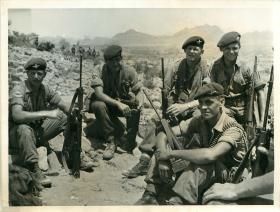
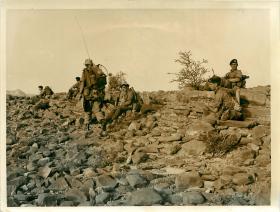
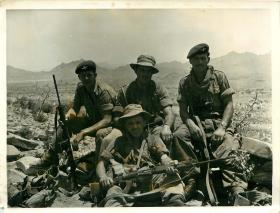
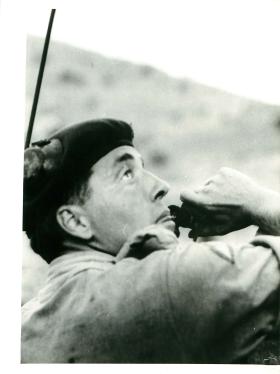
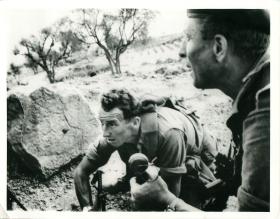
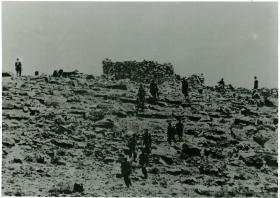
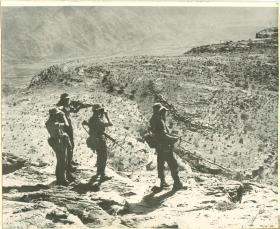
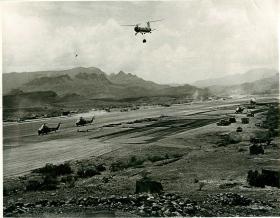
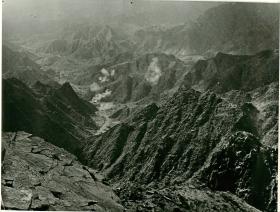
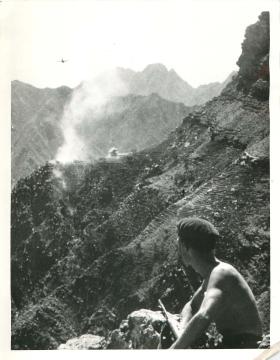
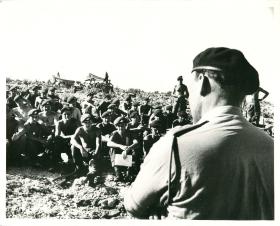
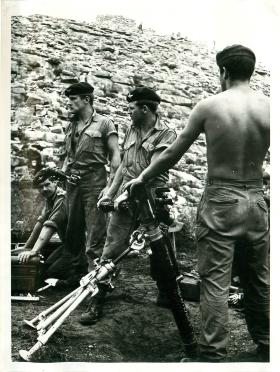
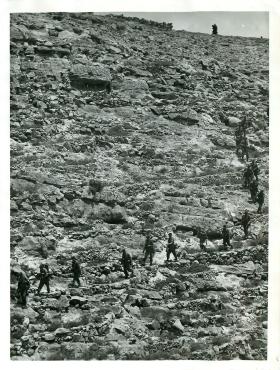
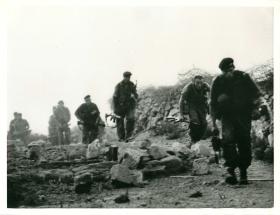
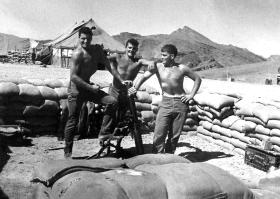
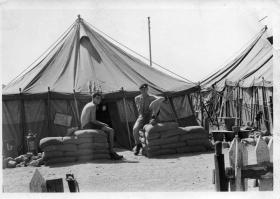
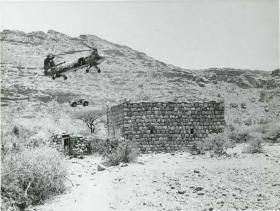
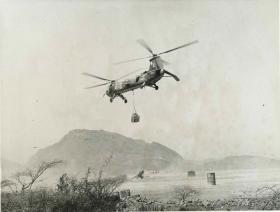
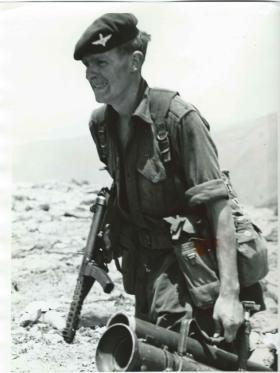
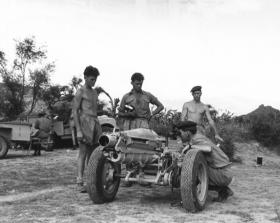
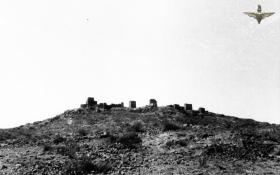
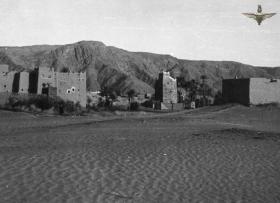
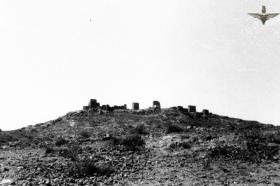
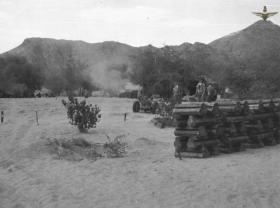
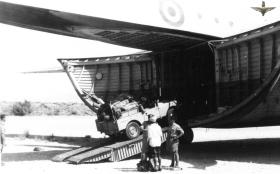
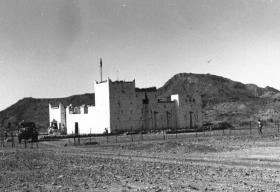
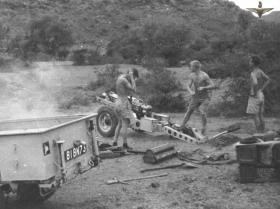
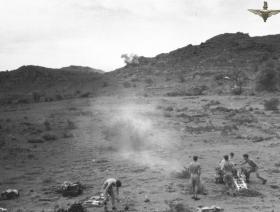
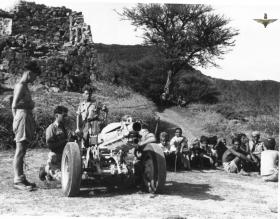
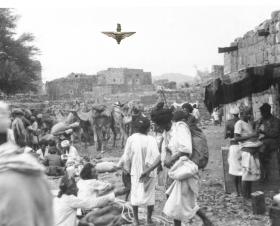
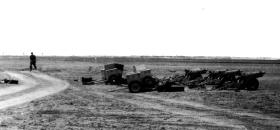
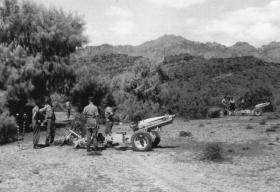
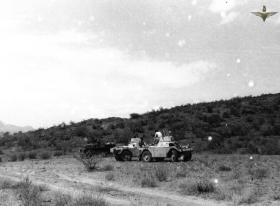
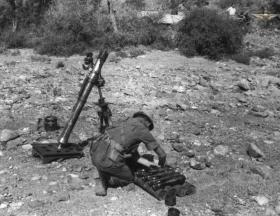
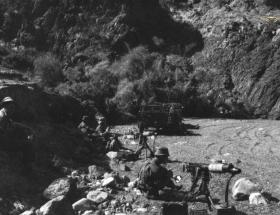
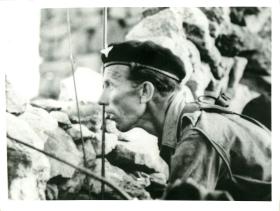
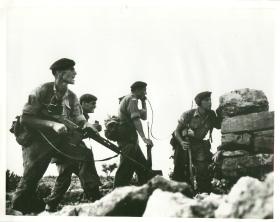
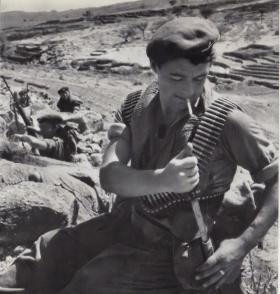
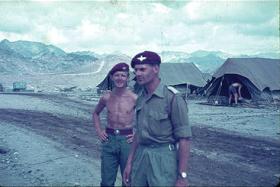
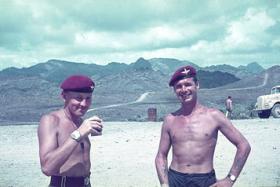
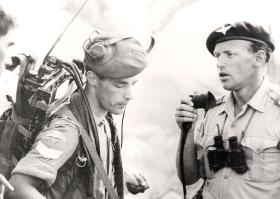
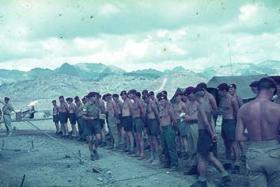
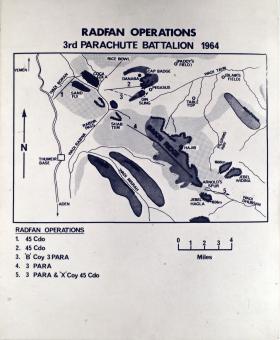
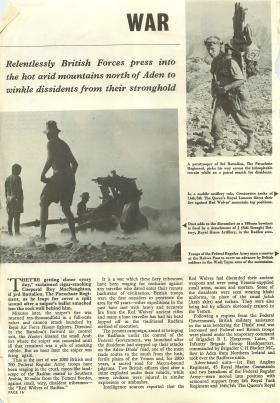
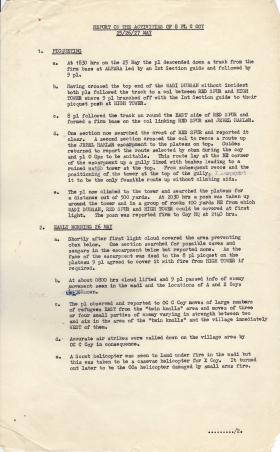
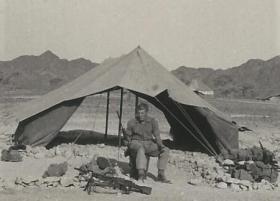
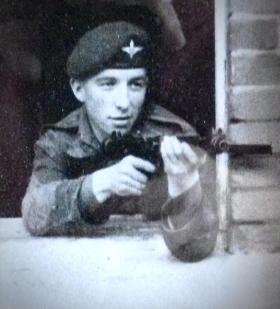
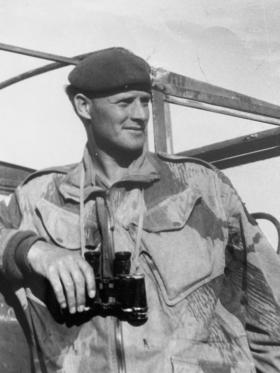
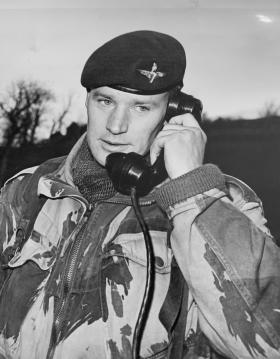
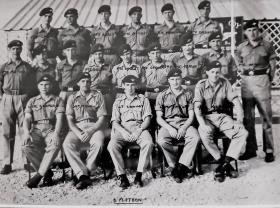
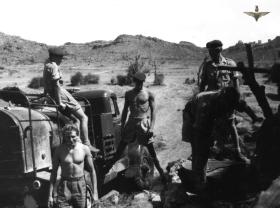
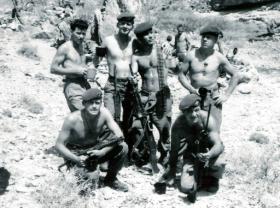
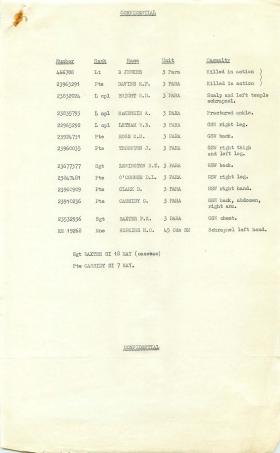
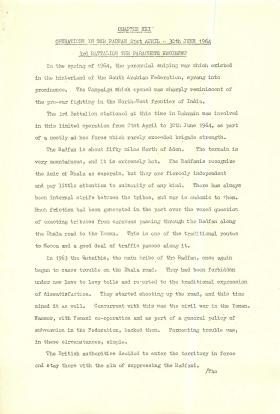
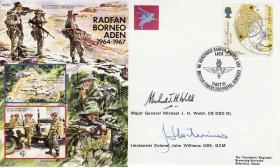
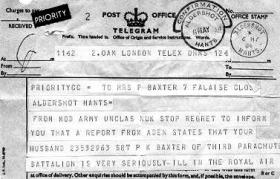
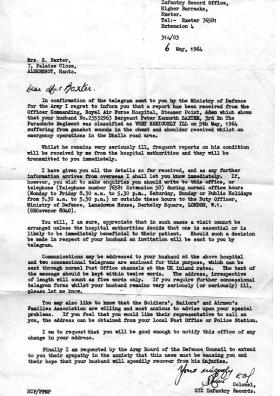
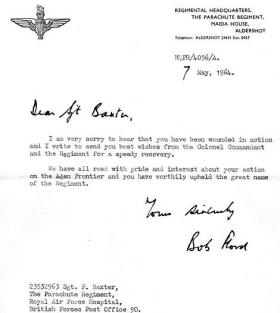
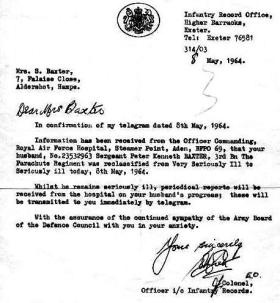
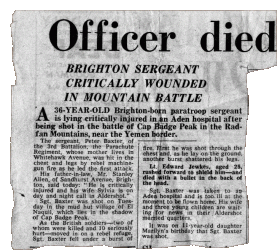
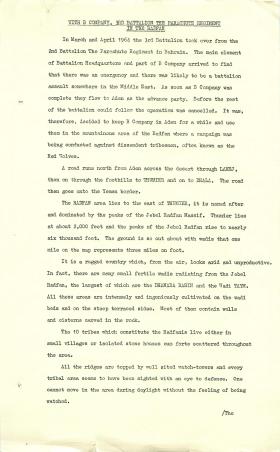
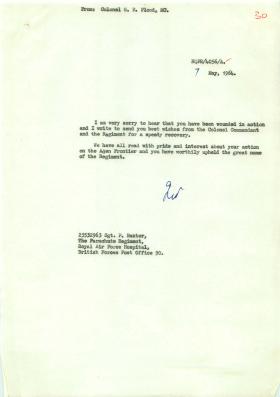
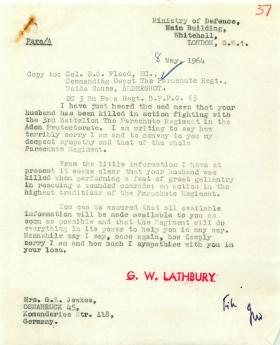
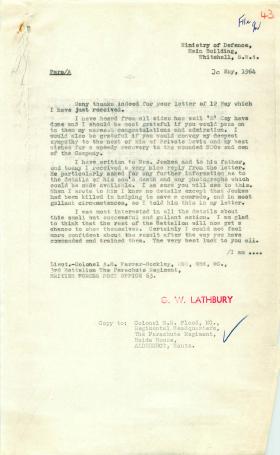
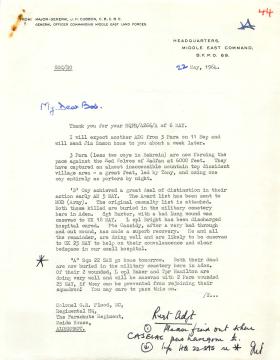
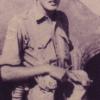



Latest Comments
it was a six gun battery of 75 mm pack Howitzer and they were there for just over a year. The Battery was under a CSM David Bushell and he gave his photos of this event before he died.
Add Comment
In order to add comments you must be registered with ParaData.
If you are currently a ParaData member please login.
If you are not currently a ParaData member but wish to get involved please register.